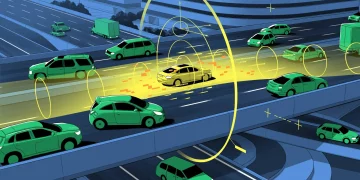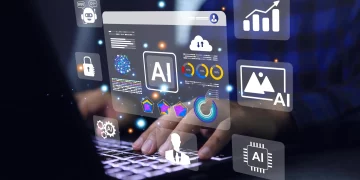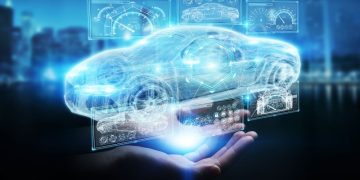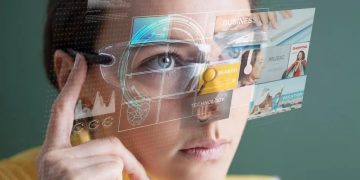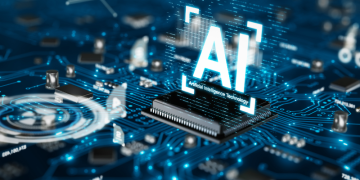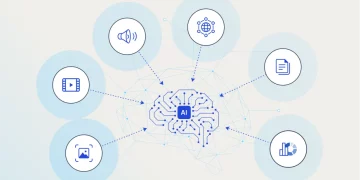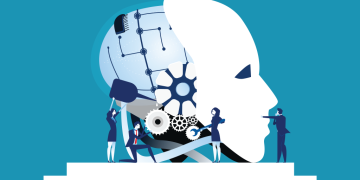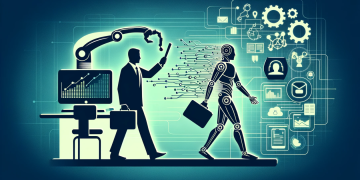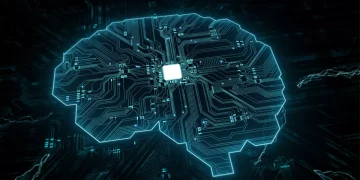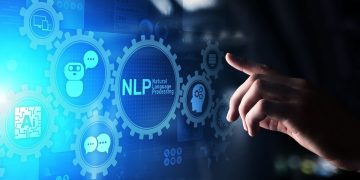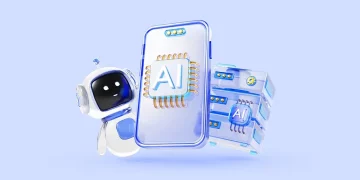Introduction
Education is undergoing a significant transformation, fueled by the rise of Artificial Intelligence (AI). AI’s role in the education sector is rapidly evolving, providing students with a more personalized, engaging, and effective learning experience. From tailored learning paths to real-time feedback, AI-powered tools are enabling educators to cater to the unique needs of each student, improving both student performance and engagement.
In this article, we will explore several prominent AI applications in education that have led to transformative results. These real-world examples demonstrate how AI is not just automating administrative tasks but, more importantly, personalizing learning experiences, offering students the opportunity to reach their full potential.
1. AI-Driven Personalized Learning: Tailoring Content to Individual Needs
1.1 Adaptive Learning Systems: Customizing Educational Content for Every Student
One of the most significant ways AI is transforming education is through adaptive learning systems. These systems use AI algorithms to assess a student’s strengths, weaknesses, learning speed, and preferences. Based on these insights, adaptive learning platforms provide personalized content, ensuring that each student’s educational experience is as relevant and effective as possible.
Case Study: DreamBox Learning
- Challenge: Traditional education systems often use a one-size-fits-all approach, which can leave students behind or fail to challenge advanced learners sufficiently.
- AI Solution: DreamBox Learning is an AI-powered math program that tailors lessons to individual students in real-time. The platform analyzes a student’s interaction with the lessons, including response times, accuracy, and decision-making patterns. Based on this data, the system adjusts the difficulty level of tasks and suggests personalized learning strategies.
- Outcome: DreamBox has shown significant improvements in student learning outcomes. In one study, students using DreamBox improved their math scores by 2.5 times more than their peers in traditional classrooms. The system’s ability to personalize content ensures that no student is left behind, while also providing advanced learners with the appropriate level of challenge.
Other Notable Examples:
- Knewton: Knewton’s adaptive learning platform customizes educational content for each student based on their learning style, helping students grasp difficult concepts at their own pace.
- McGraw-Hill Education: McGraw-Hill has integrated AI into its learning platforms to offer personalized learning experiences, particularly in subjects like math and reading. By analyzing student performance, the system offers specific recommendations and customized assignments.
2. AI-Powered Tutoring: Enhancing Learning with Real-Time Assistance
2.1 Virtual Tutors: 24/7 Learning Support
AI-powered virtual tutors are changing the way students receive help. These AI-based systems are designed to provide real-time support, answering questions, explaining concepts, and guiding students through exercises. With 24/7 availability, AI tutors can help students when human instructors are unavailable, making learning more flexible and accessible.
Case Study: Squirrel AI
- Challenge: Many students need additional help outside school hours, but personalized tutoring can be expensive and difficult to access.
- AI Solution: Squirrel AI, a Chinese ed-tech company, has developed an AI-based tutoring system that provides one-on-one assistance to students in subjects like math and science. The AI system uses machine learning algorithms to assess a student’s knowledge, learning habits, and areas of struggle. It then creates a personalized learning plan, offering lessons and interactive activities to address individual needs.
- Outcome: Squirrel AI has demonstrated impressive results, with students improving their exam scores by nearly 20%. The system also provides personalized feedback, helping students better understand their mistakes and learn from them.
Other Virtual Tutors:
- Duolingo: Duolingo is a popular language-learning platform that uses AI to create personalized lessons based on user progress. The AI adjusts the difficulty of exercises to keep students challenged but not overwhelmed, enhancing learning retention.
- Carnegie Learning: Carnegie Learning offers AI-powered math tutoring solutions for K-12 students. The system provides instant feedback and adapts to the student’s needs in real-time.
3. Intelligent Assessment Systems: Accurate Feedback and Grading
3.1 AI-Enabled Assessments: Enhancing Accuracy and Efficiency in Grading
Traditional grading systems are often subjective, time-consuming, and unable to provide detailed insights into a student’s learning progress. AI-powered assessment tools, however, offer instant, objective feedback on assignments and exams, allowing educators to focus more on teaching and less on administrative tasks.
Case Study: Gradescope
- Challenge: Grading can be a time-consuming and inefficient process, especially for assignments that require open-ended responses.
- AI Solution: Gradescope is an AI-driven grading platform that helps educators grade assignments quickly and accurately. The system can grade not only multiple-choice questions but also open-ended responses, such as essays or coding assignments, using natural language processing (NLP) and machine learning algorithms.
- Outcome: Gradescope has significantly reduced grading time, allowing teachers to provide more timely feedback to students. In a study at Stanford University, educators reported that grading time was cut by 50%, while the quality of feedback improved, leading to a better learning experience for students.
Other Intelligent Assessment Tools:
- Turnitin: Turnitin uses AI and machine learning algorithms to detect plagiarism in students’ work, ensuring academic integrity. It also provides personalized feedback on writing quality and structure.
- Proctorio: Proctorio uses AI to monitor students during online exams, ensuring they don’t cheat and receive fair grades. The system uses facial recognition, behavior analysis, and other biometric data to track students during exams.
4. AI in Learning Analytics: Improving Educational Strategies
4.1 AI-Powered Learning Analytics: Data-Driven Insights for Better Teaching
AI-powered learning analytics helps educators track student progress, identify potential issues, and adjust teaching strategies. By analyzing large datasets, AI can provide deep insights into student behavior, performance trends, and engagement levels. These insights allow educators to intervene early and tailor their teaching to ensure every student succeeds.
Case Study: IBM Watson Education
- Challenge: Teachers often struggle to provide timely, targeted support for students who are falling behind, and many students do not get the help they need before it’s too late.
- AI Solution: IBM Watson Education is leveraging AI to help educators monitor and improve student progress. Using advanced data analytics, Watson analyzes student performance, learning patterns, and classroom engagement. The system identifies struggling students and recommends personalized interventions.
- Outcome: IBM Watson Education has been shown to improve student engagement and academic performance by providing teachers with insights that help them adapt their teaching style. For example, Watson helped a school in the U.S. improve reading comprehension rates by 40% in just one semester.
Other Learning Analytics Tools:
- Tableau: Tableau’s AI-driven data visualization tools help educators analyze student performance data, identify trends, and develop tailored teaching strategies.
- Khan Academy: Khan Academy’s AI-powered platform tracks student progress and offers personalized feedback. The platform suggests specific exercises based on the student’s individual learning needs.
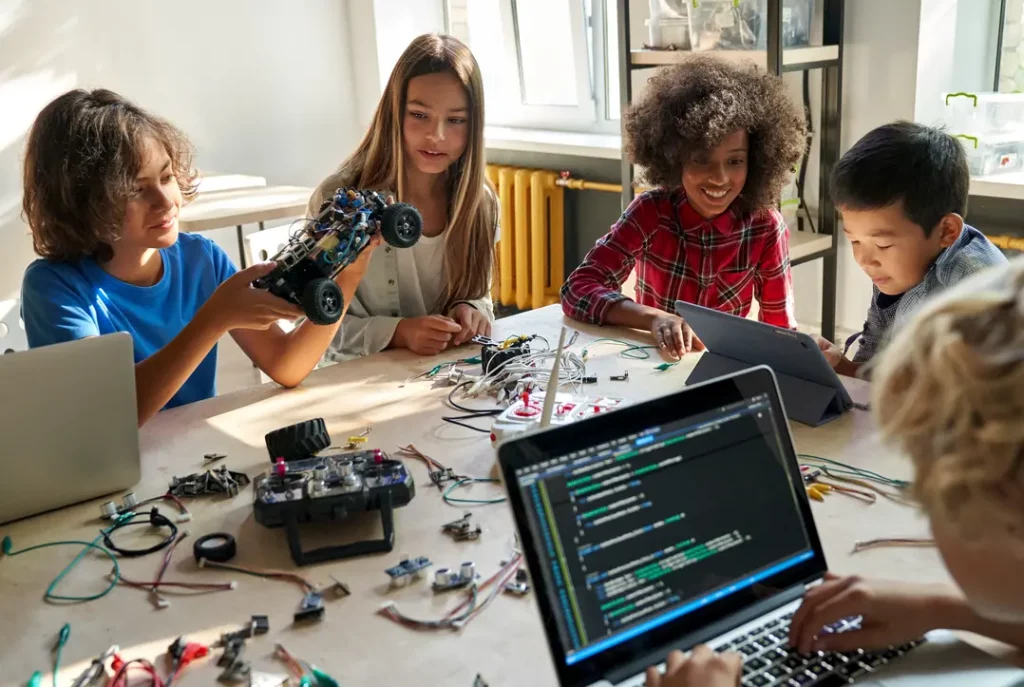
5. AI in Special Education: Supporting Diverse Learning Needs
5.1 AI for Students with Disabilities: Making Learning Accessible
AI is also playing a critical role in special education, offering tailored solutions for students with disabilities. From speech recognition for students with hearing impairments to visual recognition for students with learning disabilities, AI is helping break down barriers and create more inclusive learning environments.
Case Study: Microsoft’s AI for Accessibility
- Challenge: Students with disabilities often face barriers in traditional educational settings, making it difficult to access learning materials and participate fully in class.
- AI Solution: Microsoft’s AI for Accessibility initiative aims to develop AI-powered tools that help students with disabilities. One example is Seeing AI, an app that uses computer vision to describe the world for visually impaired students. Additionally, Microsoft’s Translator helps students who are hearing-impaired by providing real-time captions during lessons.
- Outcome: These AI tools have enabled students with disabilities to better engage in the learning process. For example, visually impaired students can now participate in class discussions, improving their overall educational experience.
Other Special Education AI Tools:
- Cogito: Cogito offers AI-powered tools that support students with autism spectrum disorder (ASD), helping them develop social and communication skills.
- Grok Learning: Grok Learning offers coding lessons that use AI to adjust to the student’s learning pace, particularly beneficial for students with learning difficulties.
6. The Future of AI in Education: What Lies Ahead?
As AI continues to evolve, its potential in education is immense. In the coming years, we can expect:
- Fully Personalized Learning Environments: AI will continue to evolve toward creating fully customized learning experiences, adapting to the pace, style, and preferences of each student.
- AI-Enhanced Teachers: AI will increasingly support educators, offering real-time classroom insights, personalized lesson plans, and instant feedback on student performance.
- Virtual Reality and AI: The integration of AI and virtual reality (VR) could provide immersive learning experiences, allowing students to engage with educational content in new and dynamic ways.
- Global Access: AI will help democratize education by making high-quality, personalized learning available to students worldwide, regardless of location or socioeconomic status.
Conclusion
AI is reshaping the education landscape, offering innovative solutions that enhance learning experiences and outcomes. Through personalized learning, virtual tutoring, and intelligent assessment tools, AI is enabling students to achieve better academic results while providing educators with powerful tools to support and guide their students.
The growing integration of AI in education has the potential to create a more inclusive, efficient, and engaging learning environment. With the right tools and strategies, AI can help create an education system that caters to every student’s needs, paving the way for future generations to thrive in an increasingly complex world.



